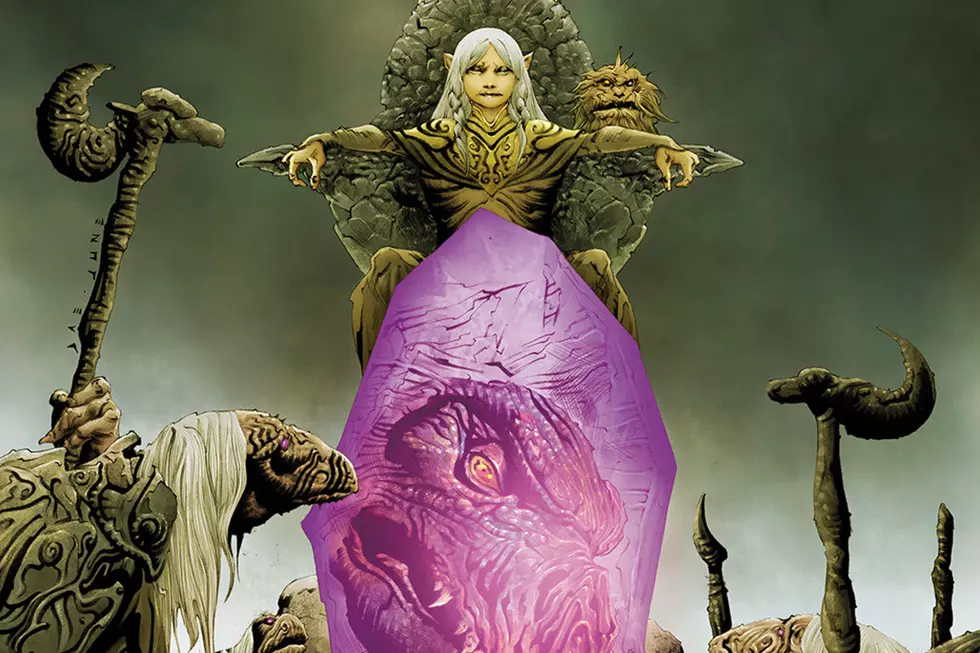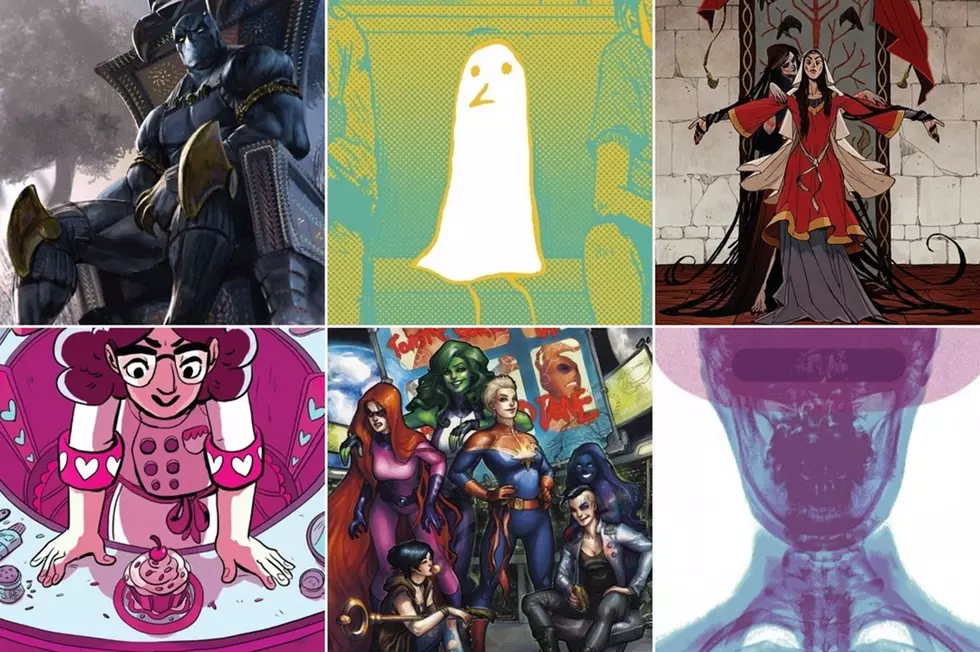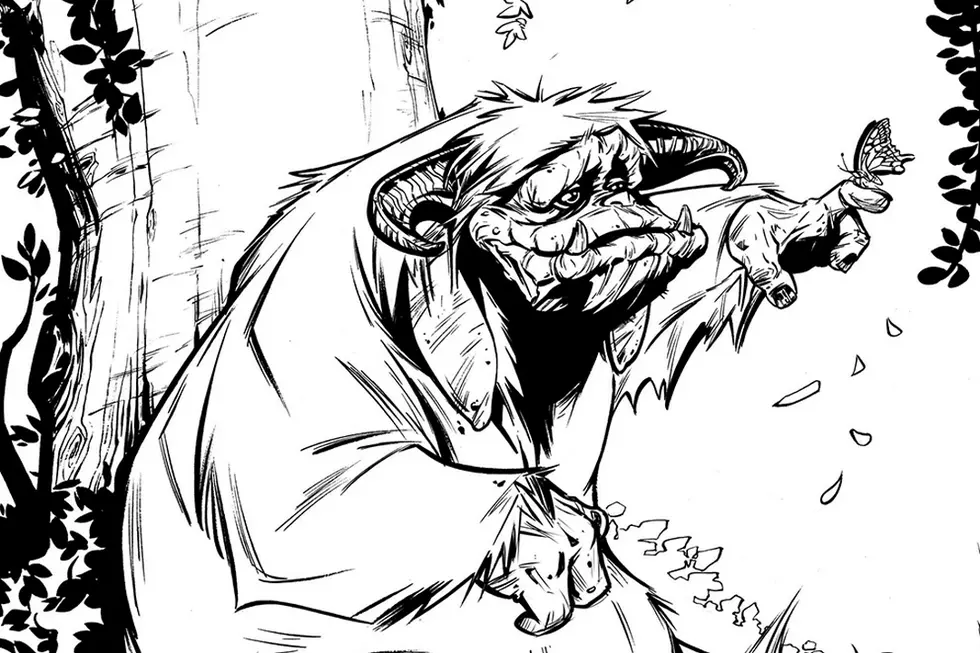![The Knife’s Edge Of Western Colonialism: Sergio Toppi’s ‘The Collector’ [Review]](http://townsquare.media/site/622/files/2014/11/collector.jpg?w=980&q=75)
The Knife’s Edge Of Western Colonialism: Sergio Toppi’s ‘The Collector’ [Review]
One of the lesser explored stanchions of the Western genre is the fairly consistent notion of the dominant invading culture moving into indigenous lands and, over time, brutally removing said peoples from that land. Usually our focus is so narrow within the genre that we rarely realize that this is exactly what is happening. The dreaded “Indian raids” of many a John Ford classic are lensed so thoroughly through the perspective of the white-faced hero or anti-hero that an audience can’t help but miss the absurdity of maligning sovereign nations responding to mass invasions by another sovereign nation. Go try and start a mass migration into Putin’s Russia and see how that goes for you.
I bring this up because Sergio Toppi’s The Collector is acutely focused on this precise issue. The collection of stories which make up this stunning tome from Archaia all occur on the knife’s edge of colonialism and western expansion -- and almost without fail, Toppi’s Collector sides with the invaded parties rather than with colonizers the way his forebears -- and, really, antecedents -- might.
I would imagine this springs from that bright shining flickering moment in the '70s when, for half a second, white people started to think maybe they had committed an egregious horror against Native Americans. Think of Johnny Cash and Marlon Brando in this era advocating for native rights, and how that notion basically went pop. Of course all of that essentially disappeared right back into the ether through the '80s. Even now, when there is a campaign underway to change the the name of the Washington Redskins football team, there is still a considerable lack of awareness or concern about Native issues. We've barely begun to examine the crushing trans-generational horrors that have been committed and continue to be committed by America's construction of reservations.
Compared to all of this, Toppi presents a hugely sympathetic ear and eye, and brings an almost anthropological level of research into the aesthetic design of the myriad cultures his Collector shuffles through in this book.
It’s something of a through-thread of Toppi’s entire career. He has always been primarily interested in history and cultures far beyond his native Italy. His work has always been a kind of expedition through world history and culture, and for the most part he’s done this with a remarkable sensitivity and avoided ending up in exploitation territory.
No place is that danger more real than here in The Collector, where, because of the Western genre tropes and his decision to have a Lee Van Cleef-style white mystic protagonist, he walks a very perilous tightrope.
The Collector is a series of stories that follows a character known only as The Collector as he travels around the world trying to accumulate items that he values as “actors in history,” which, once accumulated, he buries in his collection never to be seen again. He is very much like Cormac McCarthy’s Judge Holden character from Blood Meridian in this respect, and there is a demonic mysticism that shadows many of his actions, though he is definitely less overtly Satanic than McCarthy’s Judge.
The episodes are in general well told, and usually involve a conveyor belt of betrayals and reprisals that call upon the need for the kind of stylish spaghetti-toned western action you’d expect given their central actor.
For me the most compelling stories were the ones which involved the White Faced Lady, the Baroness Francisca Elodia Von Branzetti -- who offers kind of a through-line for a few of the stories as a woman fulfilling a similar role to the Collector. The two of them dance a fairly bloody dance across the decades through the book.
The real show here, though, is Toppi’s artwork itself.
The Collector is all black and white -- unlike the masterful Sharaz-De, the other Toppi work recently collected in English -- but it's not lacking any of the former’s beauty. The Collector is actually more... comic booky, if that makes sense. Sharaz-De is dominated by montage, and many pages are without panels, or have only a few very small panels. The balance in The Collector is very different, and these added borders allow for a greater appreciation of Toppi’s composition within stricter confines.
Toppi's sense of scale from panel to panel is hugely dramatic -- and there are sequences which remind of the filmic strengths of his Italian contemporaries Milo Manara and Guido Crepax. Toppi is the master of the ascending or descending three panel grid. He plays with the rising and falling action of that setup, either going with it as he zooms out, or slowing the reader down by resisting it for dramatic appeal.
This aspect of Toppi’s work speaks to something that is perhaps an understated strength of comics versus film. If you look at the films of Jess Franco, his use of zoom was widely derided in his day -- but through that zoom he was able to bifurcate and fracture moments of time along our focus. That act is much more readily explored in comics, where an artist can hit the same moment from different angles and slices almost concurrently. Time is not implicit in comics, only sequence, and so time can be imagined in any number of infinitely mutable ways.
Take the page above as an example. In terms of construction, this is very much the kind of thing you’d expect to see in a Sergio Leone film, with jump cuts and close zooms of the face, and then the blood splatters.
But it’s different in comics. The space across the middle panels is more truncated than it would be in a film, and there’s a crescent action going from left to right that loops you back into the Elder’s face. The page still utilizes Toppi’s favored Z-shaped construction -- but that middle arc is an extra violent zag, and even though the ascending panels bring you up away from that final panel -- the directions of the bodies as they are hit with the bullets fall down into that last panel -- the totality of this is that not only is the read intense sequentially, but there is a spectacular reverb pulling into and out of the page as the total composition plays into you. You "see" this page three times in one sitting, which is a really weird way to play with time, and not something that film or literature are capable of. The way this page plays in sequence dramatically with the pages before and after it, and how it serves as a climax to actions rising and falling from it; that is what allows the medium to pull out from other mediums that rely on the singular image.
Also worth drawing attention to is the stunning quality of the textural work at play in Toppi’s rendering techniques, which are uniquely his own. In an era dominated by plasticity, this kind of grain is something of a revelation.
The fascinating thing with someone like Toppi is that, to examine popular comics through the years, you’d think there are only a few ways to render value in ink -- but Toppi has a masterful sense of where, when, and how he is going to put lines on the page, and even though there are a lot of lines, his control and decision making is extremely considered. In execution it serves as a kind of liberation from what may now be seen as traditional techniques.
There are other artists, particularly in this era who played in these waters, but none nearly as bold. I think for contemporary artists, the work of Zak Smith and Nicolas Nemeri most come to mind in terms of this more free-flowing approach to shadow and texture. But there are no thorough antecedents for what Toppi does. The list of artists influenced by his work is also considerable -- it include such notables as Walt Simonson -- but still Toppi is so singular that to replicate his style would at best just be parody.
Toppi's figure work is somewhat lost in this maze of textures and value -- but it is no less notable. The way the Collector sharply cuts across the horizon and lengthens and contorts like a shadow fleeing the sun is remarkable.
I also think Toppis' ability to draw people of other races is admirable. He draws everyone with the same kind of dignity regardless of race or culture -- and even though there are mystical elements to some of the cultures the Collector explores, there is no fetishization. You wouldn't think one would need to mention this kind of thing -- but in comics, especially these days, something like accurately representing an Ethiopian’s hair is fairly far out beyond the curve. These are all people, not stereotypes -- and it’s pleasing to see that kind of nuanced dignity flowing out of someone’s pen, particularly from one of the masters of the medium.
Of course, any Western is only going to be as good as it’s landscapes -- and the sense of the surrounding geography, which ranges from the American West to New Zealand to the Carpathians and Ethiopia, never ceases to be its own spectacle.
The way that Toppi renders a horizon, the way he hits rocks with his ink, is something to behold. He has no peers here. In both The Collector and Sharaz-De he presents some of the most beautiful landscapes ever produced in the medium.
By this point you begin to get the picture. The Collector, as with Sharaz-De, is a rare opportunity to see one of the true masters of the comics medium at work in English. I had seen all of these comics before in other languages, but this was the first time I got to really read them, and that’s a special experience. Even though Toppi’s qualities as an artist are easy to behold no matter the language, his sensitivities as a writer -- while not always completely acute --- display a curiosity and sensitivity to the stories of the world.
There is a misstep in the opening chapter, where the Collector largely denies Native Americans agency in some of their own history and clumsily ends up as a sort of “white savior” -- but fortunately that was a bit of a one off for the rest of the book, and I think what happened with that chapter could largely be attributed to Toppi's choice of a white protagonist for a Western.
The later chapters are more sensitive to the way Western tropes can be harmful to indigenous peoples, and I think Toppi largely manages to sidestep these problems with a sophistication that earns a measure of understanding of his true aims, which are more exploratory and empathetic in nature. In fact, when we get to Sharaz-De, Toppi has removed the white hero frame from these types of stories entirely, and just focused on retelling amazing histories and myths from around the world. Which I think is what his stories seemed to call for all along.
As it stands, I think The Collector is a wonderful examination of the totality of the Western genre played against cultures and peoples that it has largely ignored and oppressed throughout its lineage. The book presents an interesting double feature with Django Unchained in that respect, and it is of no less merit. Truly a joy.
More From ComicsAlliance



![Rogues’ Gallery: Who Is The Avengers’ Greatest Enemy? [Poll]](http://townsquare.media/site/622/files/2016/07/Avengers-Vote.jpg?w=980&q=75)
![The Collector’s Vault Makes an Appearance as Hasbro’s Latest Marvel Legends Exclusive [SDCC 2016]](http://townsquare.media/site/622/files/2016/07/mrvllgnd.jpg?w=980&q=75)
![Archaia To Release ‘Mouse Guard Coloring Book’ In October [Exclusive Preview]](http://townsquare.media/site/622/files/2016/04/Mouse-Guard-Featured.png?w=980&q=75)
![Archaia To Release ‘Mouse Guard: Art of Bricks’ Hardcover [Exclusive]](http://townsquare.media/site/622/files/2016/02/Mouse-Guard-Featured.png?w=980&q=75)


